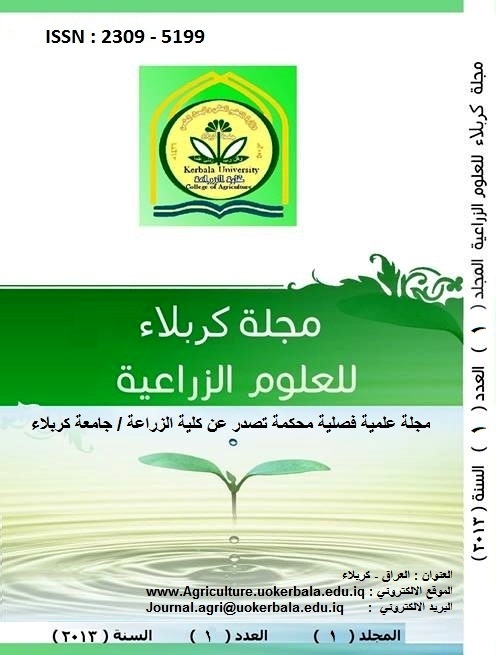Studies on the Indian meal moth plodia interpunctella Hub.(pyralididae:Lepid) and its control by som insecticides
DOI:
https://doi.org/10.59658/jkas.v1i1.342Abstract
P.interpunctella regarded as one of the most important on stored corn seeds in Thi-Qar province.Iraq Recently the insect became frequent habitants infeots dried stored food even in privae houses , The female lays about 139.3+5.2 eggs Jars containing corn seeds nuts while 44.9+15.9 eggs injars without food . Hatchiny precentageof was dif ferent being 74.56% under laboratory condition (24+5oc) and 86.91% in the incubator at constand temperature(27oc).
There are six larval instars consumed about 0.7gm of pistachio nuts , ma king several tunnels of different sizes in their foot substrate,Athick web covered with food particles resulted durng heauy infestation .Developmonts of the immature.Stages Under laboratory and incubator condition revealed no significant differences .The insect had seven generations the last one wes the longest as this insect overwintered in the form of fully grown l arva.
Ln an attempt to control this pest the following organophosphourus insecticides (Dursban sumithion and Malathion) were used against third.
And sixth instar larvae . The obtained results revealed that third instar Larvae were more susceptible to the above insecticides. Using olive oil and thanite as synergists resulted in a conspicuous increase in the Killing rate
Downloads
Published
How to Cite
Issue
Section
License
Copyright (c) 2013 Copyright (c) 2024 is the Author's article. Published by the Journal of Kerbala for Agricultural Sciences under a CC BY 4.0 license

This work is licensed under a Creative Commons Attribution 4.0 International License.
Licensing Terms
All articles are published under a Creative Commons License and will be directed to the Creative Commons Attribution 4.0 International License (CC BY 4.0) That permits use, distribution, and reproduction in any medium, provided the original work is properly cited. This license also allows the work to be used for commercial purposes.
Use by both non-commercial and commercial users
This content is licensed under a Creative Commons Attribution 4.0 International (CC BY 4.0) license, permitting use by both non-commercial and commercial users. Individual users may access, download, copy, display, and redistribute the articles to colleagues, as well as adapt, translate, and text- and data-mine the content, subject to the following conditions:
- The author's moral rights, including the right of attribution and the right to protect their work from derogatory treatment, are respected.
- Where content in the article is identified as belonging to a third party, users must ensure that any reuse complies with the copyright policies of the owner of that content.
- If the article content is reused for research or educational purposes, users should maintain a link to the appropriate bibliographic citation, including the DOI and a link to the published version on the journal's website.

